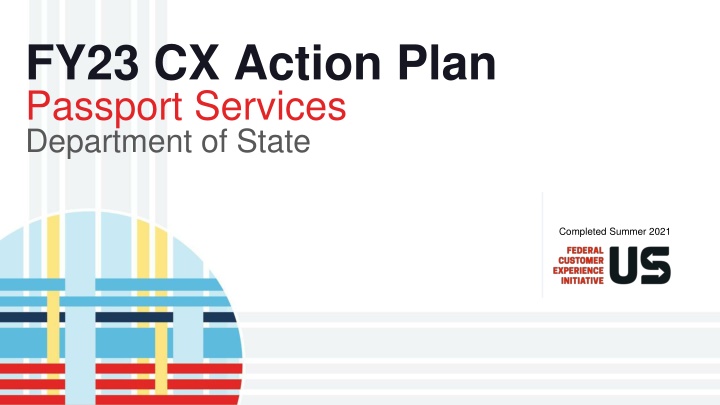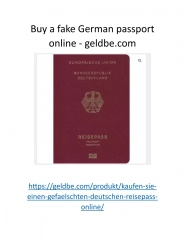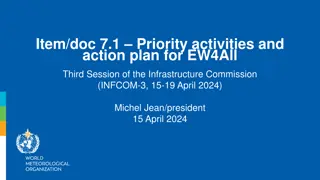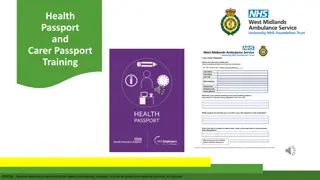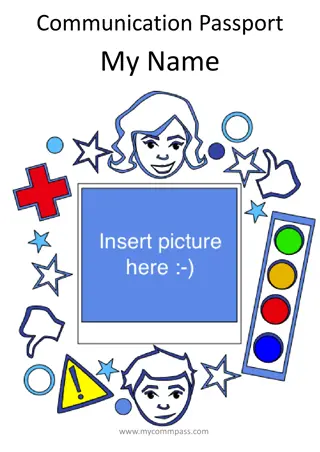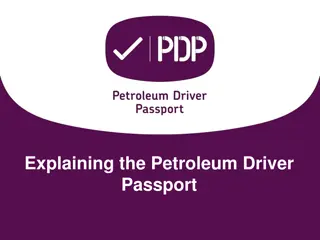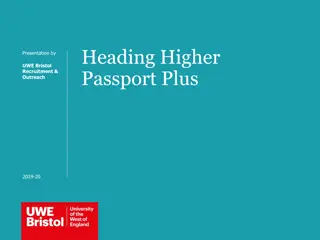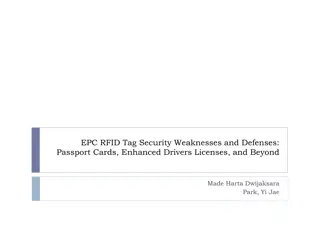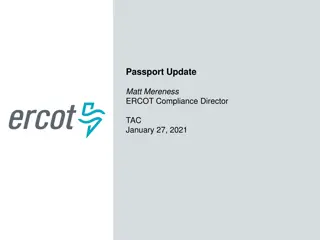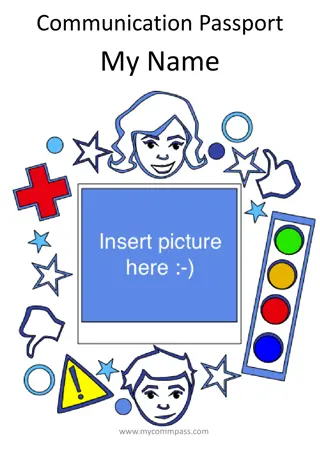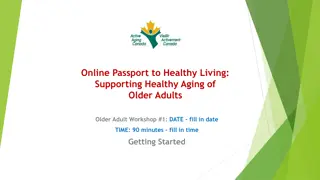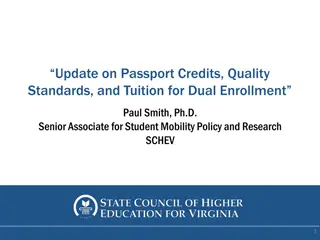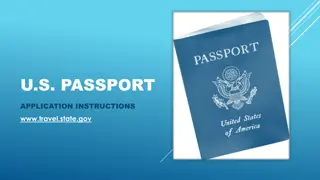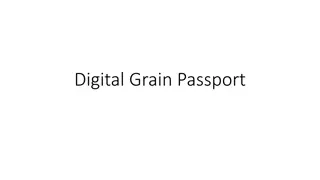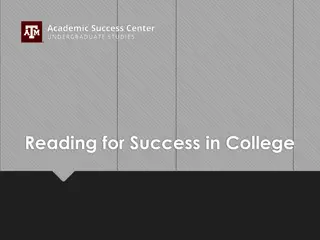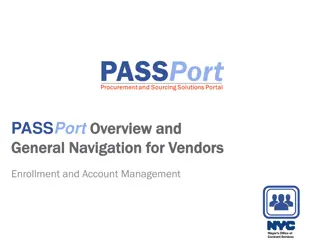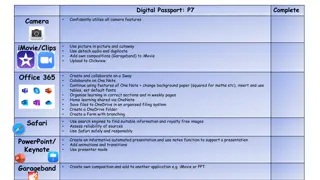Passport Services Department Action Plan and Capacity Assessment Reflection
Passport Services Department of State implemented an action plan to address challenges caused by the pandemic, prioritizing customers with urgent needs. They offered vaccinations to service partners, aiming to enhance customer confidence through digital education. The department also adapted service operations during the pandemic by optimizing call handling capacity and streamlining customer support. Initiatives focused on enhancing customer service and satisfaction.
Download Presentation

Please find below an Image/Link to download the presentation.
The content on the website is provided AS IS for your information and personal use only. It may not be sold, licensed, or shared on other websites without obtaining consent from the author.If you encounter any issues during the download, it is possible that the publisher has removed the file from their server.
You are allowed to download the files provided on this website for personal or commercial use, subject to the condition that they are used lawfully. All files are the property of their respective owners.
The content on the website is provided AS IS for your information and personal use only. It may not be sold, licensed, or shared on other websites without obtaining consent from the author.
E N D
Presentation Transcript
FY23 CX Action Plan Passport Services Department of State Completed Summer 2021
FY21 Capacity Assessment Reflection Summary What we re proud of this year: 1. We continue to recover from the pandemic s impact on passport operations. Limited capacity compelled us to prioritize customers with the greatest need. We made the difficult decision to focus our resources and efforts on customers with life and death emergencies, flight crews, mariners, humanitarian workers, matters of national security and those participating in global sporting events (World Cup, Olympics). 2. We offered vaccinations to our service partners, including our contact center which has two sites and over 600 employees. Given that the contractor is an Ability One company, they were very grateful that Department of State medical administered the vaccines onsite, minimizing logistical and operational challenges. Where we need to do better: 2 There is work to be done to more fully develop digital options for educating customers about passport services and delivering information that is relevant to their specific need. By improving in this area we hope to build customer confidence.
Adapting Service During a Global Pandemic Where we innovated As more and more people have been vaccinated there is a growing interest in travel. Our contact center has experienced unprecedented call volumes and our answer rates have been well below our targets. Given the amount of time it takes to onboard new employees who must wait many months to be granted a public trust clearance, we had to focus on optimizing operations with the resources we have. To increase call handling capacity, we attempted to reduce talk times by peeling off some calls where Customer Service Representatives would then email the customer information about how to check application status, how to apply, how to report a passport as lost or stolen, etc. Unfortunately, the impact of this change did not achieve the results we were hoping for. In July, we took a fresh look at how the contact center was organized, staffing resource allocations, procedures, and our call routing options. We recognize that for many of the calls we answer, we have no more information than what the customer has access to via our website. We have made significant call routing changes to steer customers to specific recorded information and online self-service tools so that our Customer Service Representatives can focus on answering those calls where they can add the greatest value. 3 We look forward to seeing how these changes impact our annual customer satisfaction survey results.
HISP Equity Reflection Who is this provider intended to serve? Cultivate Diversity, Equity and Inclusion has been added to our existing Consular Affairs guiding tenets and, as a Department priority, is the theme of this year s Consular Leadership event. The event has been expanded from a single day of activities across our organization, to a season from June through October. In other news, in late June the Department changed its policy so that passport applicants can now self-select their gender and are no longer required to provide medical documentation to substantiate a gender change. Where do we have a knowledge gap about individuals interactions with our service we need evidence to fill? Of the applications we typically receive annually, approximately 55% are submitted at a designated Passport Acceptance Facility (such as a Post Office, Clerk of Court, or public library). Ninety-four percent of all first-time adult applicants and minors apply at a Passport Acceptance Facility. We do not currently have a method for collecting customer satisfaction data at the point of service for these customers and must rely on the annual American Customer Satisfaction Index survey. We are exploring methods for obtaining this customer sentiment data at the point of transaction or soon thereafter. 4 In addition, we have established a 504 Compliance Working Group that has been examining accessibility at all of our customer touchpoints., identifying gaps and developing action plans to address them.
FY22 Action Update: Customer-Centric Culture for our Employees and Service Partners What customer need will this action address? To develop all employees and service partners to be customer-centric for the purpose of improving the customer experience and increasing customer satisfaction, trust, and advocacy. Why is this a priority? By virtue of the fact that we serve the general public, passport customers exemplify diversity. We believe that by investing in our employees and others who represent us, we are reinforcing a customer-centric culture. Once internalized, this should translate into measurable and positive impacts to customer satisfaction. Who is responsible for this action happening? Passport Services Customer Service Division and Passport Agency Customer Service Managers who oversee Acceptance Facilities in their region. 5 (cont)
FY22 Action Update: Service Partners and Customer Focus (cont) What action(s) / deliverables / milestones will you take / hit between Oct. 1, 21 Sept. 30, 22? We are enhancing the web-based and in-person training course for our new and existing Passport Acceptance Agents. Courses will include a module that emphasizes sensitivity, diversity, and inclusion and explains unconscious bias and how to overcome it. How will you measure whether these actions had their intended effect? We will develop a strategy for collecting customer satisfaction data at the time of service for customers who submit their application at a Passport Acceptance Facility. We will need to establish a baseline, although we do collect some data for Passport Acceptance Facilities from through our American Customer Satisfaction Index surveys and inspections conducted by our Office of Acceptance Facility Oversight. We will also plan to conduct focus groups to collect qualitative feedback about the experience of submitting an application at an Acceptance Facility. 6 What do you need to make this happen? Funding, OMB approval for new survey, IT support to implement.
FY22 Action Update: Employee Engagement What customer need will this action address? The pandemic has made this a tough year for everyone and we will need to be deliberate in our efforts to reinvigorate our employees. We have learned some important lessons, some the hard way, and need to ensure that we use this experience for continuous improvement. Just as it took time for us to navigate new ways of working during the pandemic, our new normal is evolving and we anticipate it will take time for employees to adjust. Why is this a priority? We value our people and recognize their unique talents and contributions. Our 2020 Federal employee Viewpoint (FEV) survey indicated progress has been made in improving the work climate in Passport Services but we realize we cannot be complacent. Employee Engagement was an action item in our FY21 plan but plans were paused as a result of the pandemic. By fostering an environment that supports professional development we strive for employees at all levels of the organization to feel empowered to contribute to improving the customer experience. 7 Who is responsible for this action happening? Everyone from leadership on down to individual contributors. (cont)
FY22 Action Update: Employee Engagement (cont) What action(s) / deliverables / milestones will you take / hit between Oct. 1, 21 Sept. 30, 22? Communication to the workforce is paramount, especially during times like these, and our Community Relations division is working on an internal communications plan to ensure this is not overlooked. In Fiscal Year 2021, most training was put on hold due to the pandemic and budget constraints. We look forward to resuming our expansive training curriculum. In addition, we have compiled a catalogue of online courses that emphasize all aspects of delivering excellent customer service. We will continue to actively solicit ideas from employees, who are our best resource for opportunities to improve operations and service delivery. We will continue to energize employees through our annual Consular Leadership day/season. How will you measure whether these actions had their intended effect? The results of the FEV survey that will be conducted in the fall of 2022 will be compared to previous years and analyzed. We will continue to focus on areas where we can do better. 8 What do you need to make this happen? Leadership s communication of its commitment to support and value our employees.
FY23 Commit to Action: Online Passport Renewal v2 What customer need will this action address? For the initial launch, scheduled in late December 2021, we decided to restrict who can apply online so that we can meter the volume while our Passport Specialists master adjudicating within this new system and workstream. By 2023, all customers who are eligible to renew their passport will be welcome to take advantage of the online system. In addition, we will have identified opportunities to improve the customer and back-end user interfaces, and expect to develop enhancements to be deployed in the next version. Why is this a priority? We want the Online Passport Renewal to be a great customer experience and to make passport operations more efficient. Who is responsible for this action happening? The Passport Services directorate as well as business units within Consular Affairs. 9 (cont)
FY23 Commit to Action: Online Passport Renewal v2 (cont) What action(s) / deliverables / milestones will you take / hit between Oct. 1, 22 Sept. 30, 23? We will track the reasons customers need help with the Online Passport Renewal (OPR) and share that feedback with the developers and with our Community Relations (CR) division and our Modernization and Innovation team. Passport Services also intends to conduct post- transaction surveys and focus groups with customers who renew online in 2022 to help inform improvements and future development of the online portal. Because OPR is a self-service system, in an ideal world, customer interaction with the contact center will be minimal. That said, we anticipate many customers will still want the reassurance they get by talking to a customer service representative. In addition, technical problems may arise. By passing this information on, IT can continue to improve the application and CR can improve tutorials and other related information on the website. How will you measure whether these actions had their intended effect? Each version should result in a lower percentage of applicants contacting us for assistance with OPR. 10 What do you need to make this happen? The contact center, which is supporting customer inquiries relating to OPR, can accomplish this with its existing systems.
FY23 Commit to Action: USCIS Collaboration What customer need will this action address? For many passport customers, their journey begins long before the apply for a passport. For instance, they may have first applied for a US Non-Immigrant Visa (DOS) to visit the U.S., then applied for an Immigrant Visa (USCIS), then applied for a Permanent Resident card (USCIS), then applied for and granted U.S. citizenship (USCIS), and then applied for a U.S. passport (DOS). In the example above, here are several points in this journey where DOS and USCIS intersect. Today at naturalization ceremonies, new citizens are provided with a passport application packet and in some instances officials from Passport Services are present to acceptance passport applications and provide information to newly-naturalized citizens. We believe there are other opportunities to jointly explore to leverage our outreach activities, digital engagement, and technical capabilities. Why is this a priority? We can expand upon our existing relationship with USCIS as we are both striving to improve the customer experience. Since many newly naturalized citizens still have family in their country of origin, we could work with USCIS to conduct customer outreach and encourage them to follow through on applying for a passport. 11 Additionally, our annual period of high workload volume has extended past historical trends. By looking at the end-to-end customer journey, we will have a much better idea of what is coming our way, which would help us to plan better and yield a better customer experience. Who is responsible for this action happening? Department of State and USCIS (cont)
FY23 Commit to Action: USCIS Collaboration (cont) What action(s) / deliverables / milestones will you take / hit between Oct. 1, 22 Sept. 30, 23? In July, our Passport Services Customer Service and Community Relations teams held a kickoff meeting with our USCIS counterparts and have committed to meet quarterly. We will continue to explore how we can look at the customer journey holistically and identify opportunities, both short term (e.g. information sharing, outreach) and longer term (e.g. interagency agreements, procedures, technology). We have also discussed holding an annual offsite session for brainstorming and strategic planning. How will you measure whether these actions had their intended effect? Existing and new quantitative and qualitative data collection via surveys and focus groups. 12 What do you need to make this happen? For the short term initiatives, we need a joint commitment to continued collaboration. For the long-term initiatives, leadership buy-in from both agencies, funding and, most importantly, IT support to implement technology solutions.
